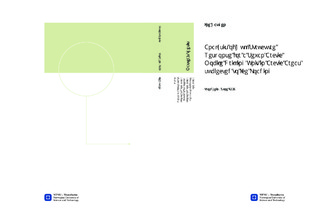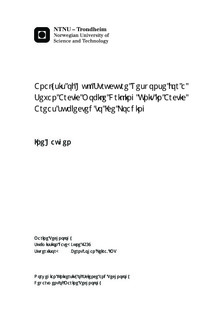| dc.description.abstract | The interest for Arctic deep water development intensifies as the worldwide demand for oil and gas continues to grow. As much as 25 % of the world s remaining hydrocarbons are assumed to be located in the Arctic area. However, the Arctic environment represents engineering challenges due to sea ice, temperature, darkness and environmental impact requirements. To meet these challenges for Arctic deep water developments to have a possibility for year-round operations, particularly for ice loading, a combination of traditional and innovative technology is the key. A buoy shaped floater with a single point detachment is suggested. The hull shape of a buoy has the advantage to reduce loading from ice features and to be loaded in all directions. The geometry of the hull in the ice action area has a significant effect on the magnitude of ice action. In this thesis, the main scope of work is to investigate and analyze ice actions subjected to a floating offshore structure with sloping hull in the ice action water line.The first section is a literature review of the different aspect of sea ice to get a better knowledge of sea ice s properties and behavior such that the Arctic engineering becomes more comprehensible. Further, a study of the Arctic areas of interest with focus on the Barents Sea has been carried out, followed by an assessment of the industry s experiences with floating platforms in ice infested waters.An assessment of ice actions, both global ice action and local ice pressure, has been performed using a Sevan Arctic Mobile Offshore Drilling Unit design as reference structure. Theoretical formulations to determine global ice action from level ice and ridge has been examined, as well as an assessment of ice actions from managed ice due to full scale experience from an identical design, the Kulluk Drilling unit. A comparative study of upward and downward sloping structure has been conducted towards geometrical parameters for the ice features, such as level ice thickness, rubble height, consolidated layer thickness and keel height. It is found that increasing level ice thickness is more severe than increasing geometrical sizes of ridges if the slope is bending ice upwards, but opposite if the slope is bending ice downwards. Local ice pressure on sloping structures has been difficult to determine due to lack of literature available. Hence, several approaches have been assessed and the most suited approach for sloping structures has been used further in the thesis to examine structural hull capacity. As a final assessment, a nonlinear static analysis has been performed in ABAQUS of a local model extracted from a Sevan Arctic Mobile Offshore Drilling Unit design which is a buoy shaped floater. ABAQUS solves the finite element method numerically. Hence, a theory part targeting ABAQUS and the element theory relevant for this thesis has been presented. Further, the footsteps necessary to perform in ABAQUS to submit a nonlinear static analysis has been presented. A study has been done with regards to the selection of element size and type by a convergence test which establishes that linear quadrilateral elements with reduced integration and global size 200mm provide conservative results. The local model was check with regards to structural capacity for uniformly distributed ice pressure. In this thesis, the structural capability has been examined for stiffeners and plates and limited by the yielding criterion given by von Mises stress. Based on the results, it has been suggested to design the scantling with higher capability in the stiffeners and reduce the capability in the hull plate to decrease this scattering in structural capability between stiffener and plate. It has also been suggested that the operational ice draft should be designed such that ice actions are loaded on the elevation of a stringer. | nb_NO |

